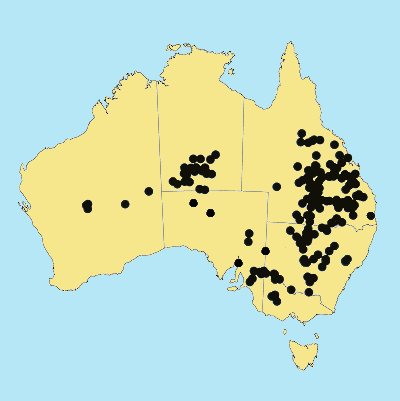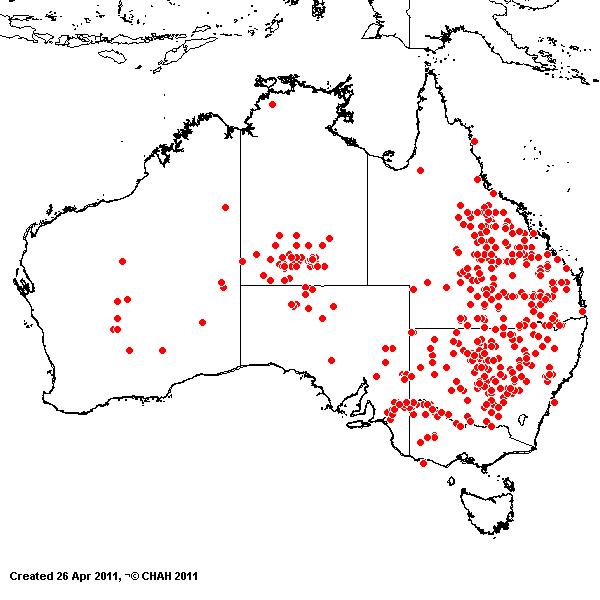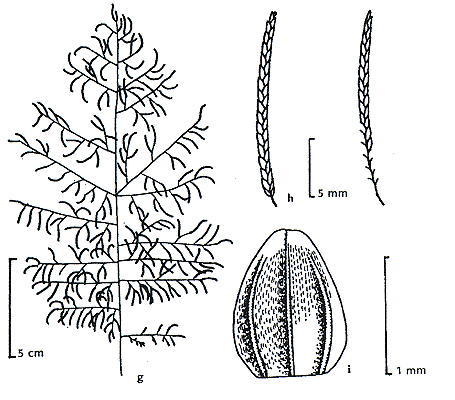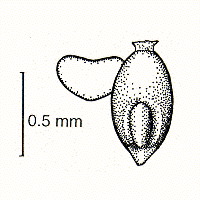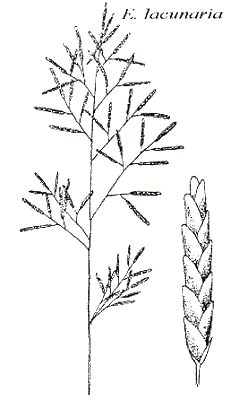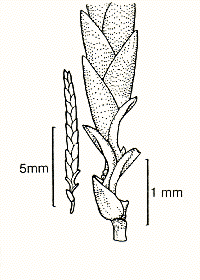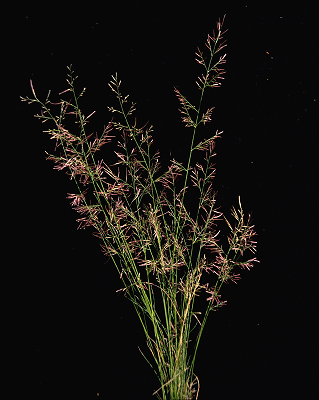Eragrostis lacunaria F. Muell. Fl.
Austral. 7: 649 (1878).
Classification. (GPWG 2001) : Subfamily Chloridoideae. Cynodonteae.
Type of Basionym or
Protologue Information: Australia,
Subtropical New Holland: Mitchell (K lecto).
Key references
(books and floras): [1878] G.Bentham, Flora Australiensis 7 (649),
[1981] M.Lazarides in J.Jessop (ed)., Flora of Central Australia (458),
[2002] D.Sharp & B.K.Simon, AusGrass, Grasses of Australia, [2006]
J.Jessop, G.R.M.Dashorst, F.M.James, Grasses of South Australia (373),
[2008] S.W.L.Jacobs, R.D.B.Walley & D.J.B.Wheeler, Grasses of New South
Wales (252).
Illustrations:
[2005] K.Mallet (ed.), Flora of Australia 44B: Poaceae 3
(Fig. 64F-G), [2006] J.Jessop, G.R.M.Dashorst, F.M.James, Grasses of South
Australia (373, Fig. 304), [2008]
S.W.L.Jacobs, R.D.B.Whalley & D.J.B.Wheeler, Grasses of New South Wales,
4th edn (252).
Habit. Annual
or perennial. Culms erect, 12–60 cm tall, wiry, 3–5 -noded. Lateral branches
simple. Leaf-sheaths smooth or papillose. Ligule a fringe of hairs, 0.5 mm
long. Leaf-blades straight, involute or convolute, 2–7 cm long, 1–2 mm wide.
Inflorescence.
Inflorescence compound, a panicle. Panicle oblong or ovate, 4–24 cm long, 6–10
cm wide.
Spikelets.
Spikelets pedicelled. Fertile spikelets many flowered, with at least 2 fertile
florets (9–43), comprising 9–43 fertile floret(s), with diminished florets at
the apex, linear, laterally compressed or terete, 5–22.5 mm long.
Glumes. Glumes
similar. Lower glume lanceolate, membranous, keeled, 1-keeled, 1 -nerved. Upper
glume lanceolate, 0.75–1 mm long, membranous, keeled, 1-keeled, 1 -nerved.
Florets.
Fertile lemma 1–1.5 mm long, keeled, 3 -nerved. Lemma apex muticous. Lodicules
present. Anthers 3. Grain 0.5 mm long.
Continental
Distribution: Australasia.
Australian
Distribution: Western Australia, Northern Territory, South Australia,
Queensland, New South Wales, Victoria.
Western
Australia: Helms, Ashburton, Austin. Northern
Territory: Central Australia
South. South Australia: North-western,
Lake Eyre, Eastern, Murray.
Queensland: Burke, Burnett, Darling
Downs, Gregory South, Leichhardt, Maranoa, Mitchell, Moreton, North Kennedy,
Port Curtis, South Kennedy, Warrego, Cook, Wide Bay.
New South Wales: North-Western Slopes, Central-Western Slopes,
North-Western Plains, South-Western Plains, North Far Western Plains, South Far
Western Plains. Victoria: Murray Mallee, Wimmera.
Notes.
A useful fodder species in native pastures.
Distinguishing characters include panicle long
relative to plant; spikelets biconvex or terete, with closely imbricate
florets; glumes sometimes dissimilar; lemmas cartilaginous, often purple and
glossy; palea keels scaberulous in upper half; palea flaps much narrower than
body; caryopsis laterally compressed, 3–4 angled, often concave or grooved,
shiny.
Endemic;
occurs in W.A. near Wiluna and the Rawlinson and Warburton Ra., central N.T.
around Alice Springs, Flinders Ra. and the Murray R. area of S.A., and from
about Charters Towers, Qld, S to Dimboola in central Vic. In deep, red or
brown, often alluvial loams of medium texture in tablelands and low hilly
country; also in skeletal sands on rocky sandstone, quartzite, calcrete and granite
breakaways, ridges and hills.; flowers all year round.; fruits all year round.
